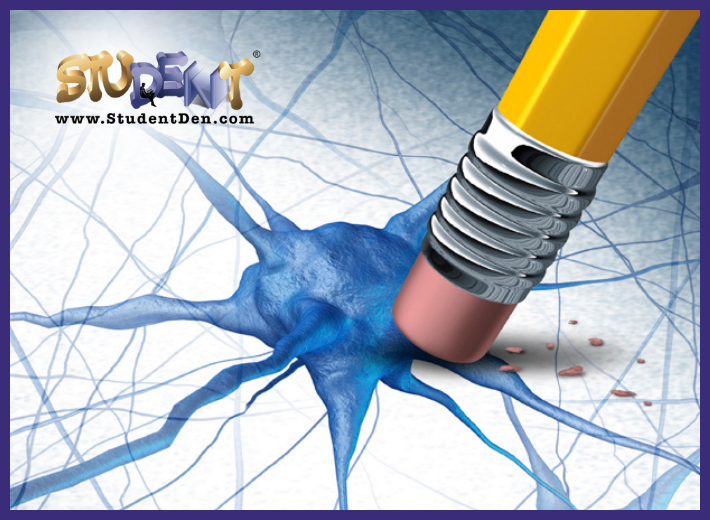
Many students have memory problems. The memory demands for school-age children are much greater than they are for adults. Thanks to decades of research, there are various strategies we can use to protect and sharpen our minds. Here are seven tips and tricks you might try to help jog their memory — and yours!
When I polled a group of friends to find out their favorite memory tips and tricks, the most common response was, “Sorry, I don’t remember.” Haha. I guess I’m acquainted with more comedians than I thought.
Fortunately, other people had scads of useful ideas for triggering memories. This blog will be devoted to the best memory tips I could find from experts, friends, and my own experience. At the end of the blog, I’ll offer a few research-based tips for strengthening memory at any age.
While it’s true that some forgetfulness occurs with aging, memory lapses can happen to anyone, according to psychologist Lydia Cho. Still, it’s disconcerting when a name or a fact slips your mind. Here are seven general strategies you can use to minimize memory mishaps.
Ironically, the most powerful memory tip might be… “Don’t try to remember.” Instead, the instant you think of something you want to act on later, write it down. Yes, make lists.
This practical idea comes from productivity guru David Allen in his classic book, Getting Things Done. If your brain is filled with to-do items, project ideas, long-term goals, short-term goals, grocery lists, and whatever, you can easily feel overwhelmed. Allen advises you to capture “all the things that need to get done—now, later, someday, big, little, or in-between—into a logical and trusted system outside of your head and off your mind.” (Italics are mine.)
I would add: Forget things that don’t matter to you. In other words, first set priorities. Then pay attention only to what is essential to your goals and values. Sweep the rest out of your mind… or into a folder that you can look at again if you need to.
It’s striking that only a few of the tips below rely on actual memory. The rest depend more on habits, systems, and records. Like this one:
Here are a few trusted tactics to get your to-dos off of your mind and onto a list ASAP:
1. Email yourself from your cellphone. This is my favorite technique. I email myself reminders, articles from newsletters and social media, items to put on my Master To-Do List (“The List of Lists”), and everything else.
2. Use your phone or paper calendar. One friend enters everything she wants to do as an “Event” on her cellphone calendar. Others write goals and tasks on their paper calendar as if they were appointments, such as: “10 a.m.: Exercise.” “Find a time for it” is one of the most effective ways to follow up on your goals.
3. Write notes in large letters on a whiteboard, a notepad, or a sticky note. Then tape them to a spot where you can’t not see them.
4. Use general terms to back up specific ones. On your phone contact list, for example, add a title or category to a name: “Dr. Samantha Brown, neurologist”; “Rennie Bowles, electrician.” If you forget the name, you have another way to retrieve it.
Don’t worry if your item ends up on more than one list. Redundancy will ensure that you see and act on an item eventually.
1. Take a photo with your smartphone. That list of groceries? Snap a picture now. Delete it later.
2. Set out objects that will remind you of your must-do tasks. One classic example: Block the doorway with your laundry basket.
If you take an assortment of medications, a pillbox with compartments for each day of the week is essential. This will solve two problems: Remembering to take your pills and later—when you ask yourself, “Did I take my pills?”—demonstrating that you did, in fact, take your pills.
3. Color your world. Use colored pens, markers, and folders to draw your attention to a special task or item.
A habit is an action you’ve repeated so many times that it’s ingrained in your brain. A routine is a series of habits. If you want to remember something without effort, make a habit of it. For example:
1. Put essential items in the same place every time. Your keys? On a dedicated hook or in a zipped compartment of your purse. Same for your phone, glasses, and any other essentials. If you have to put an item in an unfamiliar place, talk out loud about what you are doing, suggests memory expert Cho: “I am setting my phone on the kitchen table now.”
2. Set up health routines. For example, create an exercise “no-brainer” like this one from a friend: Set out walking clothes the night before. Wake up, slip into exercise clothes, eat breakfast, go for a walk.
3. Link a time to a task. If you want to establish a writing habit, for example, set aside a date and time, say, Monday-Friday, at 8 a.m. The time becomes a cue for the activity.
Once a routine becomes second nature to you, no reminders are needed. However, if you need to change a routine, you may need to post a reminder sign.
There are times, such as when you are driving, when you might not be able to write something down immediately. At these times, remembering is your only option. But these fun tips can keep your item at the top of your mind until you can put it on your list.

1. Use mnemonic devices. A mnemonic is a device such as a pattern of letters that will assist your memory. If you suddenly recall some needed grocery items on your way to the store, make up a word, if you can: “MEAD,” for milk, eggs, apples, and dates, for example.
2. Visualize like a pro athlete. Did you notice those Olympic athletes visualizing how they would tackle their ski run or their figure skating program before hitting the ice? You can do the same. Maybe you remembered that you forgot to pay a bill. Create a mental scenario where you walk in the door, throw down your things, and head for the computer (or the checkbook) to pay up.
3. Issue “self-instruction.” “When I see my datebook sticking out of my purse, I will remember to check my commitments for the week” is an example of self-instruction.
4. Talk to yourself out loud—or even sing. Repeat your to-do task out loud, over and over: “Call Ann, call Ann.” When you are introduced to someone, repeat their name, urges expert Cho. To make sure my four stovetop burners are off before I leave the house, I sing the theme from Beethoven’s Fifth, as I doublecheck them. Da-da-da-DA.
There are few things more frustrating than not being able to remember the right words when you need them, and I find myself in this dilemma more and more as I age. True, the right words or phrases might come to me within minutes. But meanwhile I am struggling to express myself while the other person waits, patiently or impatiently. So I’ve figured out a few ways to manage.
1. Study the vocabulary you need for appointments. That’s right: Study up, just like you learned to do in high school. I might write those words on a card or in my appointment book. If I don’t have time to write them down, at least I’ve refreshed my memory and increased the chance that I’ll remember them at the doctor’s office or when I meet with the HVAC guy.
2. Make a document with your medications, doctors, and other critical information. Print it out and take it to your appointments. Don’t rely on memory!
3. Make a list of questions you might have when you meet with a professional. These can go in your phone or on a traditional list.
1. Meet with friends and family in a quiet place where you are more likely to hear the other person. Another great tip from Dr. Cho.
2. Use a timer. Want to remember to turn off the lawn sprinkler? Start dinner? Set a timer and let the bell toll for thee.
Good memory and good health are closely related, as one friend reminded me. She advised that we stimulate our brains and bodies by regularly doing word and number puzzles, reading, keeping up with technology, socializing, eating healthy food, exercising, and sleeping 7-8 hours per night. Research bears out the value of her suggestions. In this recent study, data compiled from dozens of studies show that adults from 55-68 can prevent a decline in personal memories with regular exercise.
If you would like to improve your recall, consider mindfulness meditation, which numerous studies have linked to better memory and attention. Recent research also indicates that brief mindfulness meditation might improve your visual memory, perhaps by reducing stress.
Having a sense of purpose has also been linked to better memory. With a sense of purpose, your memory could even improve as you age, according to memory expert Angelina Sutin. Connecting with others, pursuing long-term goals, reflecting on meaningful everyday activities, and following your curiosity are four such ways to find purpose and improve memory, says Sutin.
It’s encouraging to realize that by following your purpose—goals that are exciting and motivating for you—you could be improving your memory as well as improving the world around you.
(c) Meg Selig, 2022. All rights reserved.
Important Note: If memory problems interfere with your daily functioning, consult with your doctor.
Thanks to these friends for ideas: Ann Ross, Sara Salmon, Jane Klopfenstein, Kate Kimelman, Brian Carr, Beth Powell, Susan Waugh.
USE THE SUMMER TO GET AHEAD! We can help reduce — or eliminate — the stresses of online classes, SAT/ACT prep, or even just homework. What about college guidance and the application process? Let us help make things easier for you and your kids. You can find us on Facebook or call us for a complimentary consultation at 561.213.3794
Reference: [https://www.psychologytoday.com/intl/blog/changepower/202202/7-memory-strategies-work-any-age]